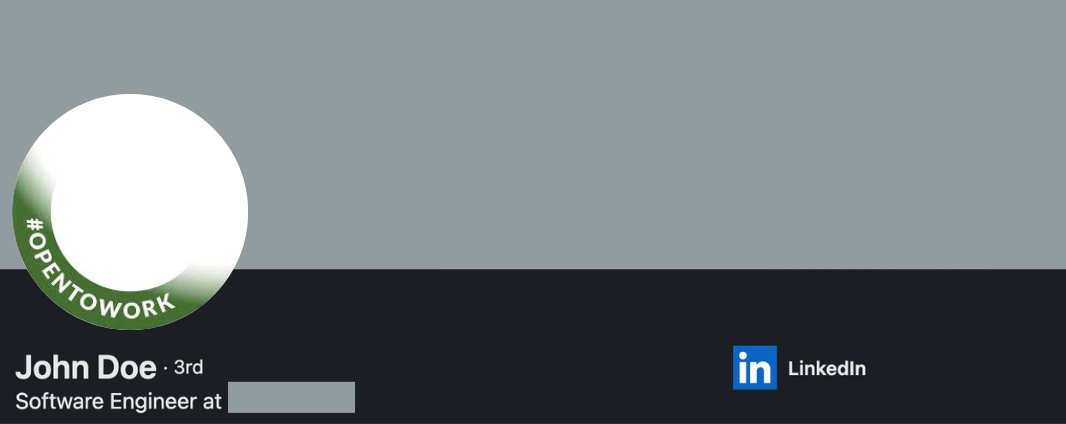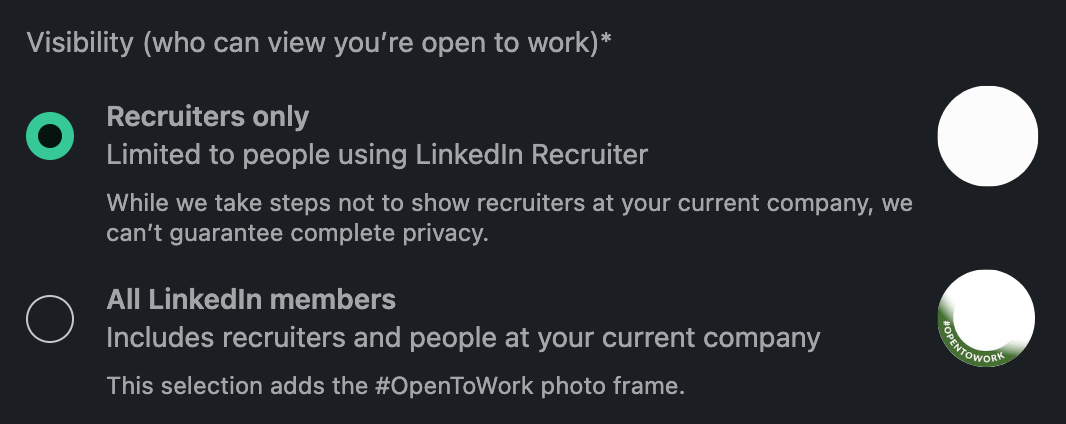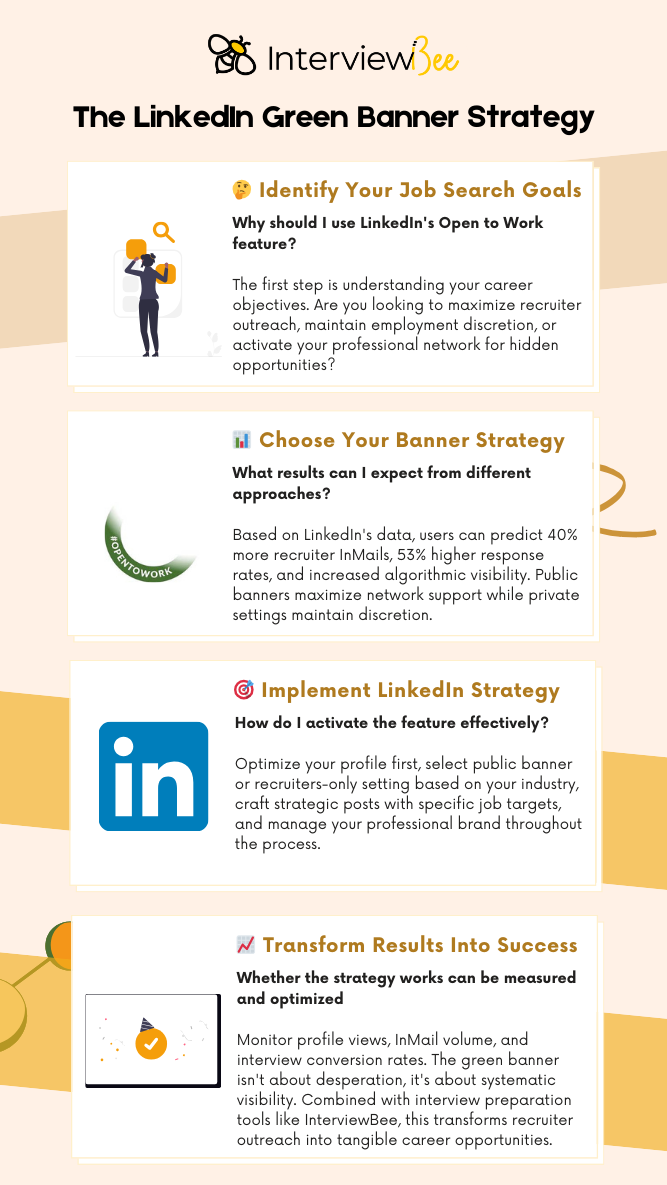
Open to Work LinkedIn: The Banner That Gets Recruiter DMs
- Author: Anindita Ghosh
- Published On: Sep 24, 2025
- Category:Interview Guide
LinkedIn's green banner has become the most controversial feature in modern job searching. This simple visual indicator, officially called the open to work LinkedIn feature, has sparked heated debates while quietly revolutionizing how recruiters discover talent. But does it actually work, or does it signal desperation?
Why the LinkedIn Green Banner Works: The Data
LinkedIn's internal data reveals compelling statisticsabout the open to work LinkedIn feature that settle the debate:
Recruiter Engagement Results:
- 40% more InMail messages from recruiters
- Response rates jump to 53% vs 35% for non-users
- Positive response rates reach 14.5% vs 4.6% for regular profiles
- Job application likelihood increases by 86%
Research analyzing 487 candidate interactions found that open to work LinkedIn users were three times more likely to engage in meaningful job discussions compared to passive candidates. 85% of job seekers who post about their search receive network assistance, often leading to referrals and hidden opportunities.
The Algorithm Advantage
LinkedIn's search algorithm prioritizes open to work LinkedIn profiles, creating what experts call a "visibility snowball effect." This algorithmic preference means:
- Higher placement in recruiter search results
- Increased profile view frequency
- Better job recommendation matching
- Enhanced reach for posts and updates
This data-driven approach explains why the feature has become synonymous with "hacking" the platform, it provides a legitimate way to increase discoverability without paying for premium features.
What is the LinkedIn Open to Work Feature?
The open to work LinkedIn banner isn't really a "hack", it's LinkedIn's official feature launched in 2020. When activated, it frames your profile picture with a green circle and #OpenToWork badge, essentially creating a digital billboard for your job search.
The feature offers two strategic options:
- Public Banner: Visible to all 900+ million LinkedIn members
- Private Signal: Only visible to linkedin open to work recruiters only with premium licenses
This dual approach has created a sophisticated system where 200 million professionals use the private version while only 40 million display the public banner.
How to Use It Strategically: Public vs Private Banner
Public Banner Benefits

The public open to work LinkedIn banner maximizes visibility and network support, leading to referrals and hidden opportunities through your professional network.
Recruiters-Only Setting Advantages

The linkedin open to work recruiters only option provides algorithmic benefits without public exposure. This approach offers:
- Enhanced search visibility to hiring professionals
- Reduced spam from service providers
- Maintained discretion for current employment
- Access to premium recruiter searches
Best Practices for Maximum Impact
Profile Optimization First
Before activating any open to work LinkedIn setting:
- Ensure complete profile with professional photos
- Craft compelling headlines beyond job titles
- Write engaging About sections telling your story
Strategic Timing
- Turn off banners immediately after accepting positions
- Monitor and respond to recruiter outreach promptly
- Track opportunity sources to measure banner effectiveness
Spam Management
- Update privacy settings to limit unwanted contact
- Develop template responses for low-quality outreach
- Report scammers to improve platform quality
Industry-Specific Implementation
- Executive Roles: Career coaches advise against public banners for C-suite positions, recommending the linkedin open to work recruiters only setting instead.
- Tech Professionals: Technology sectors show positive responses to public banners due to industry culture around job mobility.
- Traditional Industries: Banking, law, accounting, and government sectors often prefer discrete searching through private settings.
- Healthcare Professionals: Doctors, nurses, and medical administrators typically use private settings to maintain patient confidentiality.
- Education Sector: Teachers, professors, and administrators often choose discrete options due to institutional sensitivities.
- Finance Executives: Investment bankers, private equity professionals, and wealth managers prefer recruiter-only visibility.
Crafting Effective Open to Work Posts
Strategic open to work linkedin post examples that generate results typically include:
Essential Elements:
- Specific job titles and industries
- Geographic preferences
- Key skills and experience highlights
- Clear call-to-action for connections
Sample Framework:
"I'm open to new opportunities in [specific role] within [industry]. My experience in [key skills] has delivered [quantifiable results]. I'd appreciate connections with [target audience] in [location]."
Making the Strategic Decision
The open to work LinkedIn feature generates measurable results when used strategically. Data shows 40% more recruiter engagement, but success depends on implementation, industry context, and individual circumstances.
Choose Public Banner If:
- You're comfortable with transparent job searching
- Your industry values openness
- You want maximum network support
Choose Private Setting If:
- You're currently employed and need discretion
- You're in executive or traditional roles
- You prefer targeted over volume-based approaches

Conclusion
The LinkedIn green banner isn't about desperation, it's about strategic visibility. When combined with optimized profiles and proper interview preparation, this feature transforms from controversial topic into career acceleration tool.
Once recruiters start reaching out through your open to work LinkedIn strategy, being prepared becomes crucial. Tools like InterviewBee's AI-powered mock interviews help you practice responses before real conversations, while resume optimization resources ensure your profile matches recruiter expectations.
Whether you choose public visibility or the linkedin open to work recruiters only option, the key lies in strategic implementation that aligns with your career goals and industry expectations.


